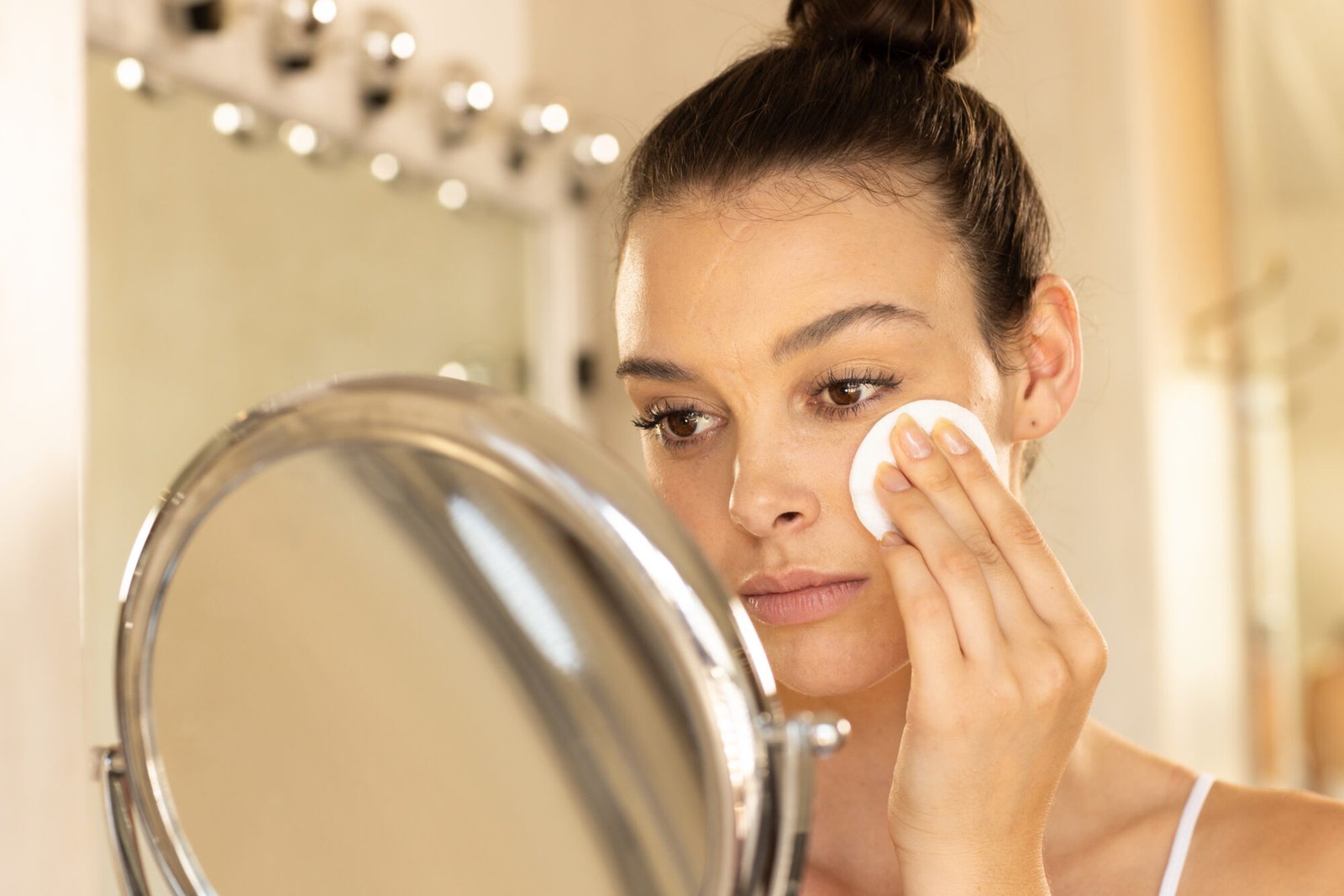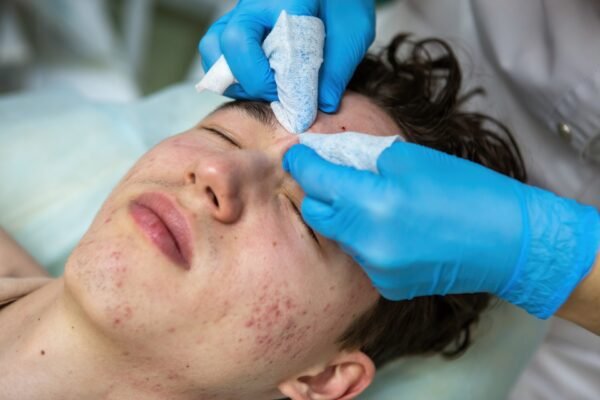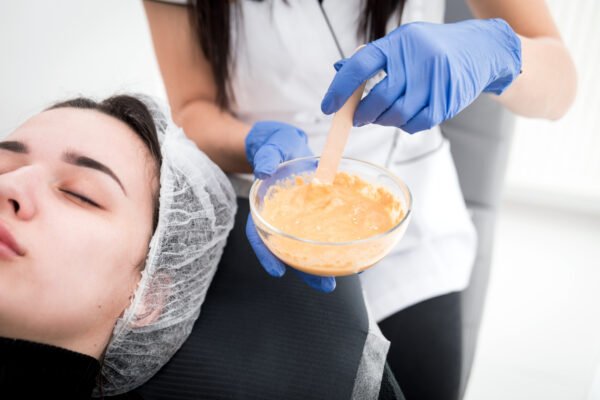Introduction
Ever felt like your face is oily by lunchtime despite your best skincare? You have company! Oily skin is normal, but with the appropriate routine, you may have a natural glow without shine. Welcome to the definitive guide to oily skin skincare, where we’ll reveal secrets, methods, and must-have products that will change your beauty routine.
What is Oliy Skin?
Oily skin must be defined before considering skincare. The sebaceous glands produce too much sebum, which clogs pores and gives oily skin a glossy appearance. Everyone generates sebum, but too much might cause greasiness.
Genetics, hormones, and diet may cause oily skin. Recognizing these variables may improve skin concerns. Oily skin may begin in childhood and last into adulthood, or it might develop throughout certain life stages.
Oily skin has advantages despite problems. Natural moisturizer oil helps oily skin develop fewer wrinkles than dry skin.
Skincare Routine for Oily skin
Oily skin needs a concentrated skincare routine to reduce shine and maintain health. Daily routines decrease breakouts, regulate oil production, and clarify skin.
Maintaining consistency is vital. Regular care balances skin, decreasing flare-ups. Customization is necessary since what works for one person may not work for you. Trial and error is worth it to find the proper routine.
Finally, a routine may make skincare self-care. In a busy atmosphere, reflect and prioritize. Who doesn’t appreciate pampering?
Morning Routine Essentials
Starting the day with a good skincare routine promotes healthy skin. Oily skin needs a moderate morning routine. Start with a gentle, foamy cleanser to eliminate nighttime oil without drying out your skin.
After cleansing, use your routine to help unclog pores and remove buildup—alcohol-free toner. Witch hazel and tea tree oil may treat excess oil and preserve your skin’s pH. Toners in the morning prepare the skin for the remainder of the routine.
End with an oil-free moisturizer. Even oily skin needs moisture! Use lightweight, non-pore-clogging formulations. For oily skin, non-comedogenic products are best.
Nighttime Routine for Oily Skin
Evening skincare is crucial, if not more so than your morning routine. Nighttime oily skin treatments are best since the skin restores itself. First, double cleanse to remove makeup, sunscreen, and daytime pollutants.
Try a salicylic acid or niacinamide serum after washing. Improves acne and oil control. Skin serums penetrate deeper more profound them ideal for specific conditions.
Finally, seal the benefits with gel-based night cream—weightless hydration. Regular nighttime eating rejuvenates the skin for the day.
Exfoliation and Its Role
Any greasy skincare routine requires exfoliation. It cleans pores, eliminates dead skin, and prevents breakouts—however, balance matters. Over-exfoliation may cause skin irritation and oil production.
Try exfoliating twice or three times weekly. Use BHA-containing chemical exfoliants like salicylic acid. They penetrate the skin to eliminate oil, unlike harsh physical exfoliants.
Physical exfoliants should be gentle and face-specific. Microbeads and harsh washing may damage the skin. Apply moisturizer after exfoliation to repair the skin barrier.
Best Products for Oily Skin
Managing oily skin requires selecting the proper products. Choose “oil-free” or “non-comedogenic” skincare products. Products are designed to prevent blocking pores and producing extra oil.
Salicylic acid and benzoyl peroxide clean thoroughly and prevent acne—toners containing witch hazel or green tea extract are calm and balanced. Gels or lotions should replace creams as moisturizers.
Use mattifying primers and oil-free foundations. They can highlight control all day. Setting powders and sprays prolongs makeup without oiling your face.
Natural Remedies and Tips
Nature has several oily skin cures. Integrating natural therapies into your routine may benefit your skin. Using a clay mask monthly may reduce oil and pollution.
Another fantastic natural cure is aloe vera. Hydrates, calms, and minimizes redness and irritation. Fresh aloe gel masks and moisturizers might be helpful.
Finally, a healthy diet works. Omega-3s from fish and flaxseeds reduce inflammation and improve skin. Hydrate and eat healthy for better skin.
Lifestyle Choices Impacting Oily Skin
Lifestyle decisions significantly affect the skin. Stress, insomnia, and poor nutrition all worsen oily skin. Reduce stress using mindfulness, yoga, or breathing techniques to balance hormones.
Regular exercise boosts circulation and reduces stress. After exercises, wash your skin to eliminate sweat and germs that may cause breakouts.
Sleeping helps your skin and body heal and revitalize. Get 7-9 hours of good ssound each night. Your skin will appreciate it!
Hydration and Its Importance
Even oily skin needs hydration. In order to compensate for dehydration, your skin may produce more oil. Daily water intake helps maintain moisture equilibrium.
Hydrating products are helpful for water. Add a hyaluronic acid serum to your routine. It hydrates oily skin without adding oil, making it ideal.
Applying face mists throughout the day helps moisturize and rejuvenate skin. Rose water and cucumber extract mists are light and refreshing.
Importance of Sunscreen
Any skincare routine needs sunscreen, regardless of skin type. Sunscreens should not feel heavy or greasy on oily skin. Find oil-free or “matte finish.” formulations.
Sunscreen prevents UV radiation from causing premature aging and hyperpigmentation. Many current products for oily skin are lightweight and oil-controlling.
Reapplication is essential, particularly if you’re outside. Use sunscreen every morning as the last step in your skincare routine.
Common Mistakes to Avoid
Even with the most significant excellent ions, oily skin care blunders are prevalent. Accidentally over-cleaning is common. Washing away excess oil may seem reasonable, but doing so too frequently may strip the skin, causing it to create more.
Selecting the incorrect items might also be harmful. Always examine labels for oil-free and non-comedogenic signs. Heavy creams and cosmetics may aggravate oily skin.
Avoiding routines is another mistake. Effectively controlling oily skin requires frequent skincare. Consistency in washing, moisturizing, and addressing particular issues works best.
Reaping the Benefits of Oily Skin
It may feel like an endless fight, but oily skin has perks. Oily skin is more robust, reducing fine lines and wrinkles with age. Natural oils moisturize your skin, keeping it plump and young.
You can have clean, bright skin with the correct skincare routine and products. Consider oily skin a chance to learn more about your skin and how to handle it.
The Role of pH Balance in Oily Skin Care
To control your oil levels well, you need to know what your skin’s pH balance is. Acne and plugged pores can result from oily skin’s higher pH. Using pH-balanced items on your skin can help bring back its natural acidity, which will give you a better look. In this case, toners and serums that keep or change your skin’s pH can be very helpful.
Seasonal Changes and Oily Skin
Oily skin suffers from seasonal changes. Summer humidity increases oil production, so adjust your skincare routine. Light, matte products are needed today. However, cold air may dry up oily skin, so you may need to use heavier lotions instead of creams, which might make it oilier.
Conclusion
Finally, learning how to take care of oily skin well takes time, consistency, and a bit of trial and error. Now that you have this complete guide, you can make a routine that not only controls oil but also shows off your unique skin type. If you’re ready to take the next step, you might want to schedule an appointment with a skincare professional or look into other tools to learn more.
Have fun glowing! Happy reading, and thank you for choosing this guide to help you on your oily skin journey. Stay confident and beautiful! Happy glowing!








